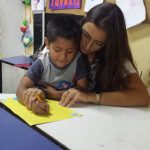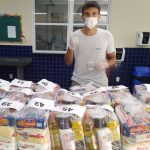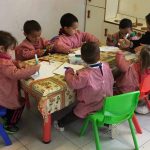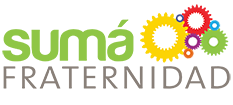5 years learning to dance the fraternity of Milonga (Parte I)
- Milonga Project

- May 23, 2020
- 3 min read
A brief journey through the history of the international volunteer program that has set the pace for youth and social action

We are celebrating 5 years since this international volunteer program began, which has been the bridge of connection between more than 200 young people from around the world and from different social organizations that have been encouraged to have an intercultural, reciprocal and fraternal experience.
They are 5 years in which many challenges have been faced and many dreams have been realized. Today we want to begin a journey of three chapters, through that story that has marked the lives of many young people and communities around the world.
The idea of proposing an international volunteer program began to take shape in 2015. At that time, some important figures, representatives of the organizations that promoted the project, began to weigh how to respond to the growing demand of young people from put into action and the needs of social organizations.
Through some questions, Virginia Osorio and Gilvan de Souza, two of the protagonists who have been there since the beginning of this dance, will tell us about how everything began to take shape, the most important moments in this story and what is coming for milONGa.
What was the idea that motivated the creation of an international volunteer program?

It was a combination of motivations. On the one hand, at the international level, Youth for a United World wanted to promote spaces of social commitment for young people from the perspective of universal brotherhood.
At the same time, in Latin America and the Caribbean it had begun a process of building a network of projects that promoted fraternity in action; During the first meetings of this network, one of the lines that was discussed was the possibility of offering international volunteering opportunities to promote social cohesion and to face inequalities.
That is to say, on the one hand there was the need for young people to take concrete actions from a social and intercultural perspective, and on the other hand, there were the organizations that wanted to receive volunteers.
It’s only need was someone who could connect them and create a channel for young people and organizations to meet.
Who, and how did they start working on the idea?
Together with Society of the Sociedade Movimento dos Focolares SMF (Brazil), Suma Fraternidad (Argentina) and the Project Office (Italy), we began to think about how the offer could be developed, what would be the main components. Taking into account the spirit that encourages so much the young people and organizations.
Inspired by the intuition of Chiara Lubich and the charism of unity, the program was conceived as a space that could contribute to the formation of Global Men and Women. Men and Women capable of leaving their own national and cultural vision and going to meet a suffering humanity, regardless of social condition, nationality, culture; Men and Women capable of weaving bonds of peace and brotherhood in a world marked by division and selfishness; Men and Women capable of demonstrating that universal brotherhood is not a dream but a reality.
Where did the name Milonga come from?

The name came up playing with some acronyms of projects we were working with. It is the acronym for ‘Mil ONG en Acción’ or ‘A Thousand NGOs in action.’ Later, investigating a little about the meaning of Milonga, - we already knew that it was a dance- we discovered that it was a dance with a strong intercultural component, typical in Argentina, Uruguay, Brazil, whose rhythm has African roots of Angolan culture. It seemed to us a sign that could help give identity to the proposal, but our surprise was greater when a musician, well known here in South America, discovered that the rhythm pattern of the Milonga can be found in many typical dances from various parts of the world, which made it clear once again how our identities are connected and we are all part of the same human family. There’s nothing better than animating a volunteer program with a name that invites us to get moving and also has such a strong intercultural component
With this discovery we conclude this first installment of the history of milONGa.









Comments